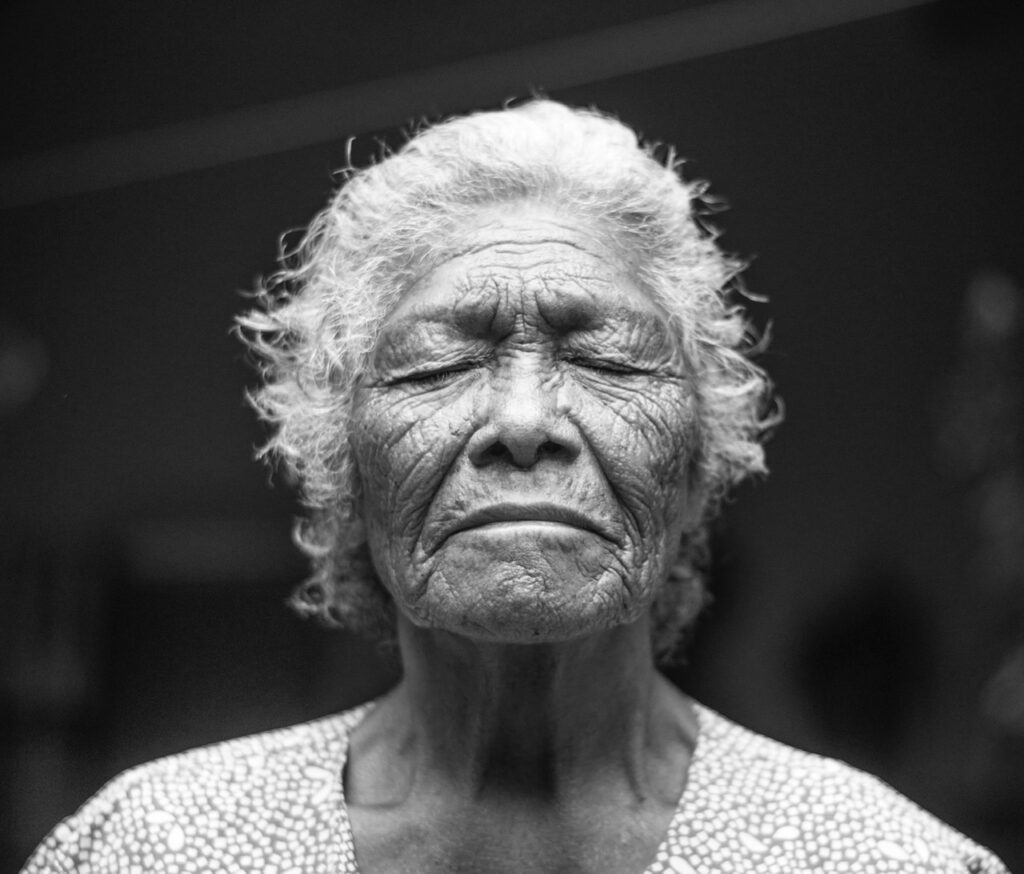The report by the Royal Commission into Aged Care Quality and Safety on the impact of Covid-19 is superficial and adds little to what is already being done to prevent and manage Covid in aged care. The Commission’s conclusion regarding Australia’s performance on COVID-19 in residential aged care is misleading and obscures the truth.

The Commission argues that Australia has done well. But it plays with statistics by comparing Australia to Canada and the United Kingdom. Comparing aged care mortality rates in Victoria to Canada and the UK paints a much bleaker picture.
At the start of October there were 1986 Covid cases among aged care residents in Victoria; 637, or about 1 in 100, aged care residents in Victoria had died, which is about 85 per cent of all Covid deaths in Victoria.
The Commission takes the view that ‘Now is not the time for blame’. But it should not use the emotive language of ‘blame’ to dodge the important question of accountability.
Without an analysis of what went wrong and who was responsible, it is hard to draw lessons about what to do in the future. The Commission has squibbed it on accountability and analysis.
The partners, family and friends of those 637 people who have died have a right to expect that those responsible are held accountable for their failures and that there is a proper analysis of what went wrong. The truth is that many of the infections and deaths in aged care could and should have been prevented.
The Commissioners argue that it was not their job to conduct a full inquiry into the impact of Covid-19. Instead they conducted a superficial one that makes some obvious recommendations and misses others.
The Royal Commission has taken a political decision to not confront the question of failure and accountability. Instead, it has handpassed that responsibility back to the Federal Government, which, of course, is responsible for the aged care system.
With little analysis or justification, the Commission makes four recommendations for the Federal Government: (1) Staff aged care facilities properly to enable more visits by residents’ families and friends. (2) Change Medicare funding so more allied health and mental health services are provided in aged care facilities. (3) Publish a national aged care plan for Covid-19. (4) Deploy infection prevention and control experts in residential aged care homes.
Staffing is obviously important to enable more visits. But more visits during the pandemic is not the main reason there should be more staff. About 60 per cent of aged care facilities in Australia are chronically understaffed, including for allied health and mental health staff, and that is affecting all elements of residents’ care.
The Federal Government should create a rescue fund to bring staffing in low-performing aged care facilities up to standard, and it should require low-performing facilities to produce a recovery plan by 31 December 2020 outlining how they propose to have adequate staff levels by the middle of next year at the latest.
A new Medicare item for allied health is best described as a Band-Aid measure.
To say that the Federal Government should establish a national aged care plan is to state the bleeding obvious. The Commission spends time describing the planning, guidelines and advice that went on between March and September without actually analysing why things went so badly wrong.
The Victorian experience shows that Commonwealth planning for the aged care system was wholly inadequate. Measures to ensure infection control, surge staffing to overcome staff shortages, coordination between aged care and health services, the availability of personal protective equipment, communication with residents and families, and measures to ensure contact between family and residents all failed. The Commission does little analysis of these failures and makes no recommendations to fix them.
Much of what happened in the second wave should have been anticipated after the Newmarch House experience in NSW during the first wave.
The Commonwealth should have been much more prepared. The Federal Government massively underestimated the scale of the effort that would be needed. The government placed far too much responsibility on providers and did not take on enough responsibility itself.
Because the Commission fails to analyse the problem properly, it gets the planning solution wrong. What is needed now is not more national advice and protocols between the Commonwealth and the States, as the Commission recommends, but much better regional and local coordination and management of aged care to solve problems on the ground.
The Commission makes a passing reference to residents’ rights in relation to access to health care, but fails to grasp the utter failure to protect residents’ rights that the Covid experience has revealed.
Residents and their families had little say about how they were treated. Often they weren’t even told what was happening. Yet the Royal Commission fails to make recommendations to address the lack of information and transparency, and to emphasise the importance of residents and families being involved in decisions.
The Royal Commission’s recommendations are at best superficial and outdated. No one can rule out further major outbreaks of Covid that could affect aged care services. It is a terrible shame that the Commission has not done a better job in preparing Australia for that possibility.
Dr Hal Swerissen is Health Fellow at the Grattan Institute and co-author of Rethinking aged care (Grattan, 2020).
Professor Hal Swerissen is a Fellow at the Grattan Institute. He has an extensive and distinguished record of achievement in health policy research and analysis. He has held senior executive positions as Pro Vice Chancellor (Regional) and Executive Dean of Health Sciences at La Trobe University. He has been a senior advisor to Commonwealth and State governments and has conducted a range of policy and research studies and inquiries. He has published more than 100 academic papers and research reports.

Comments
3 responses to “The aged care Royal Commission’s Covid-19 report is superficial, misleading and unhelpful”
Judging by the professor’s comments, the Royal Commission has produced an inadequate report. As he doesn’t mention it, I presume the RC did not ask if the underlying binary regulation model is fit for purpose. The Aged Care Standards are required to be displayed at the entrance of centres but the regulator seems too friendly too often with proprietors. Not only was the Minister for Health initially dismissive of complaints about aged care, his Secretary did not want to disclose which centres were failing in Covid prevention.
The many ugly events of this year shows a strong need to centralise a feedback mechanism role for residential “consumers” and their families. In the NDIS, choice and effectiveness of service as decided by the client is accepted in principle, with devolution of authority to the individual level, a general trend in govt-funded service provision.
A recent P & I piece by Mary Chiarell “To mask or not to mask? Is that the question?” advocated co-production of health care rather than consumption. She mentioned Standard 2 of the latest edition of the Australian Commission for Safety and Quality in Health Care Standards –“Partnering with consumers”. Did the RC address this? And who is doing work on aged care residential models which allow mobilisation of the energy and scrutiny by residents’ loved ones to improve the standards?
The continuing media obsession as to who authorised private contractors as security at the quarantine hotels In Melbourne back in March, serves to deflect from, and obscure other important issues.
Since the Kennett government’s reduction in the 1990s, of public service numbers in Victoria, concomitant with the ethic of ‘contracting out’ human services to the supposedly more efficient private sector, ‘ out-sourcing in Victoria has become an axiomatic tenet of ‘ good governance ‘, to a greater extent than elsewhere in Australia.
One insistent however question is what was the epidemiological relationship between the hotel quarantine shortcomings, and the fact that 90 % of the highly infectious COVID 19 deaths occurred in Residential Aged Care Facilities ? Here we have two not obviously connected sectors of the population, overseas returnees, and, old and frail people in residential aged care.
Australia’s aged care system is the responsibility of the Federal Government. The Interim Report of the Royal Commission into Aged Care Quality and Safety, titled ‘ Neglect’ , has noted many failings within this market-driven system. Among these are an undue reliance on inadequately trained sessional staff employed in aged care residential facilities, and the atrophying of nursing expertise in those contexts. The Forward to the Interim Report makes for salutary reading.
It would seem that conditions in aged care residential facilities were ‘ tinder dry’ for the prospect of a highly infectious pandemic such as COVID 19, spreading rapidly among residents. The Interim Report ‘ Neglect’ published last year, is prescient. It didn’t need to be that way.
The disconnect between the aged care system and the healthcare system was highlighted by the COVID-19 crisis. This is a major issue as the residents of RACF are much more likely to have significant health issues, and often lost contact with their normal healthcare providers on admission to the RACF.
This disconnect also includes access to their healthcare information, which is often siloed in their GP’s computer system, and rarely available to the RACF, or often even to acute care facilities. My Health Record can go some way in improving this, but what is needed is a more robust, integrated data system for those older Australians at highest risk. The roadmap for technology in aged care at http://www.aciitc.com.au goes some way in discussing this, but the COVID-19 crisis has raised our needs and expectations.